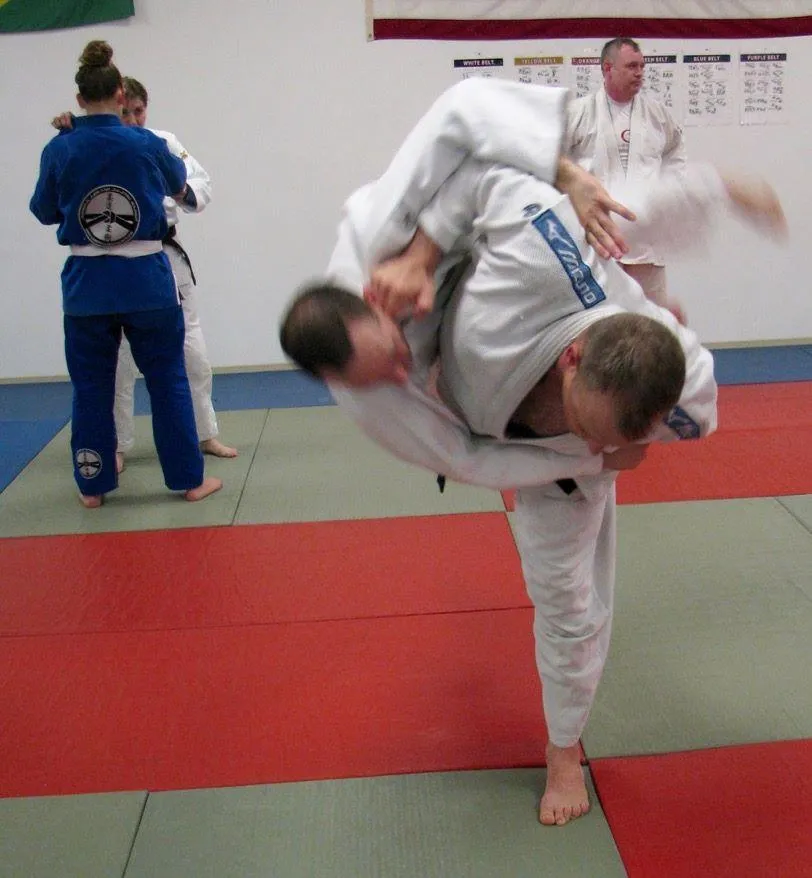
An Uchi Mata Story: A Love Letter to the Most Elegant Throw in Judo
Ah, Uchi Mata. The lifting hip throw. Even the name sounds elegant, doesn’t it? It rolls off the tongue like a well-executed technique rolls an opponent through the air and onto the mat. To me, Uchi Mata isn’t just a throw—it’s poetry in motion, a perfect blend of power, timing, and grace. And yet, despite my deep love for it, Uchi Mata and I have had a… let’s call it complicated relationship.
Let me take you back to my days as a young judoka at the University of Tennessee. Back then, I had dreams of making Uchi Mata my Tokui Waza—my signature move, my go-to technique. I was determined, and I trained tirelessly. Thousands upon thousands of uchikomi (repetitive practice entries into the throw) consumed my training hours. If sweat were a currency, I could have bought a small island.
Now, let’s talk about physical attributes. You see, I wasn’t exactly built for a textbook Uchi Mata. At a towering 5’10” and weighing in at a lean 160 pounds, I wasn’t the most physically intimidating judoka on the mat. To make matters more amusing, I was also blessed with disproportionately short legs. If you know Uchi Mata, you’ll understand that long, elegant legs tend to make the throw look—and feel—effortless. I had…well, let’s call them “efficiently sized” legs.
But hey, determination can make up for physical shortcomings, right? Sort of. Through sheer stubbornness and an ocean of uchikomi practice, I managed to develop a halfway decent version of the throw. Decent enough to occasionally surprise an unsuspecting opponent in practice. And yet, over 25 years of competitive judo, do you know how many times I successfully scored with Uchi Mata? Twice. Yes, twice. And neither time did I score an ippon (a perfect point that ends the match). I guess you could say Uchi Mata and I had a love story filled with unrequited points.
But here’s the thing—I never stopped loving the throw. And over time, I started to see Uchi Mata differently. I realized that this throw wasn’t a one-size-fits-all kind of deal. There wasn’t just one way to do it; there were many. Different grips, different entries, different setups—it was like discovering that your favorite book had alternate endings you never knew about.
I began experimenting with variations. I tweaked my grips, adjusted my angles, and played with my timing. I learned that while I might not have been built for the classic, textbook Uchi Mata, I could still make it my own. It was like music improvisation but on a judo mat— riffing on the fundamental melody of the throw.
Now, my competitive days are behind me. The thrill of tournaments and the bruises of hard-fought matches are distant memories. But my love for Uchi Mata? That’s still very much alive. And these days, I find myself in a new role: passing on what I’ve learned to the next generation of judoka.
Here’s the thing I wish I’d known back in my university days: Anyone can develop a good Uchi Mata. Yes, anyone. It doesn’t matter if you’re tall, short, lanky, or compact. The key is adaptation. You have to mold the throw to fit your body type, your movement style, and your strengths. Uchi Mata isn’t about fitting yourself into a rigid mold—it’s about finding your unique rhythm within the technique.
So, to all the young judoka out there who might feel discouraged because their Uchi Mata isn’t picture-perfect, let me share this: keep exploring, keep experimenting, and don’t give up. Uchi Mata is more than just a throw; it’s a journey. And sometimes, the most beautiful versions of it are the ones that are uniquely your own.
After all, isn’t that the essence of judo itself? Adapting, flowing, and finding your way through challenge and resistance.
So here’s to Uchi Mata—beautiful, elusive, and endlessly fascinating. May we all find our own version of it, both on and off the mat.
Want to see the Uchi Mata- https://youtube.com/shorts/YIDMg_AlpTE?si=SbqssRlggauwSnh6
